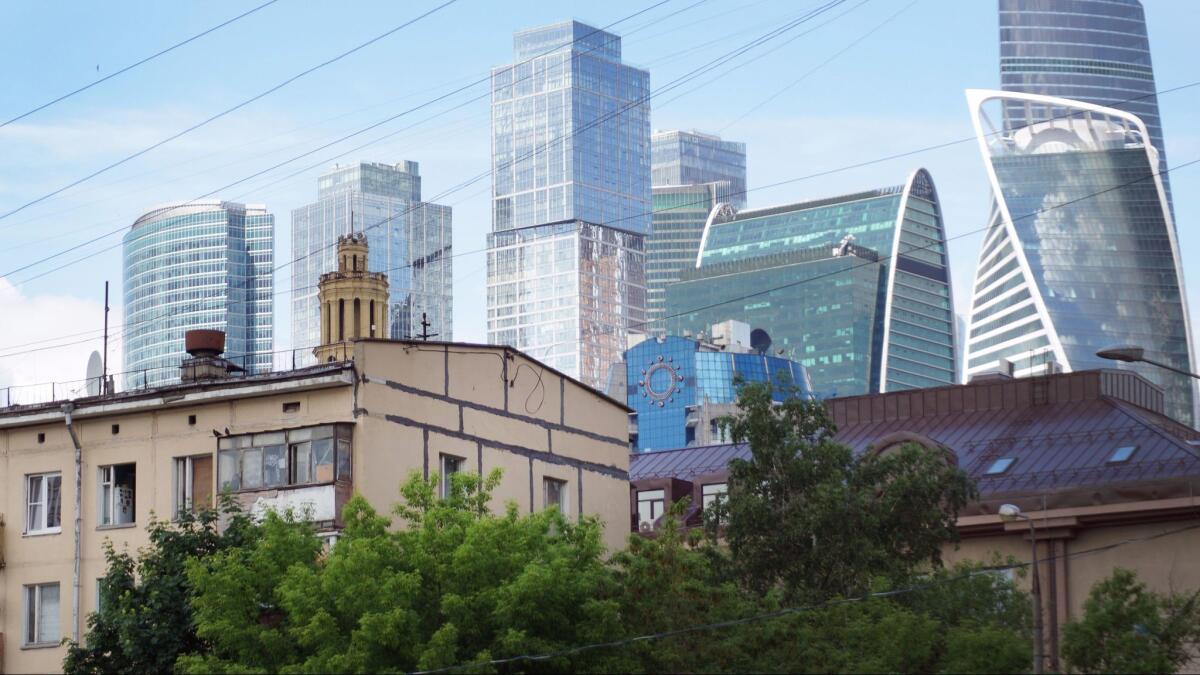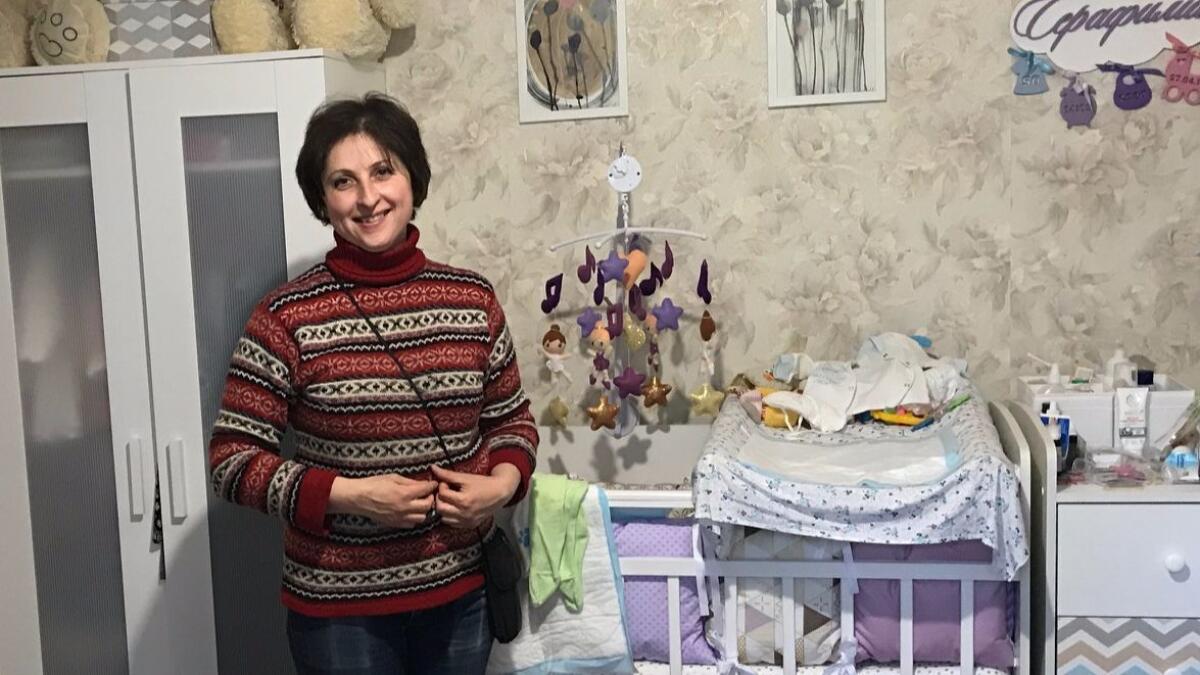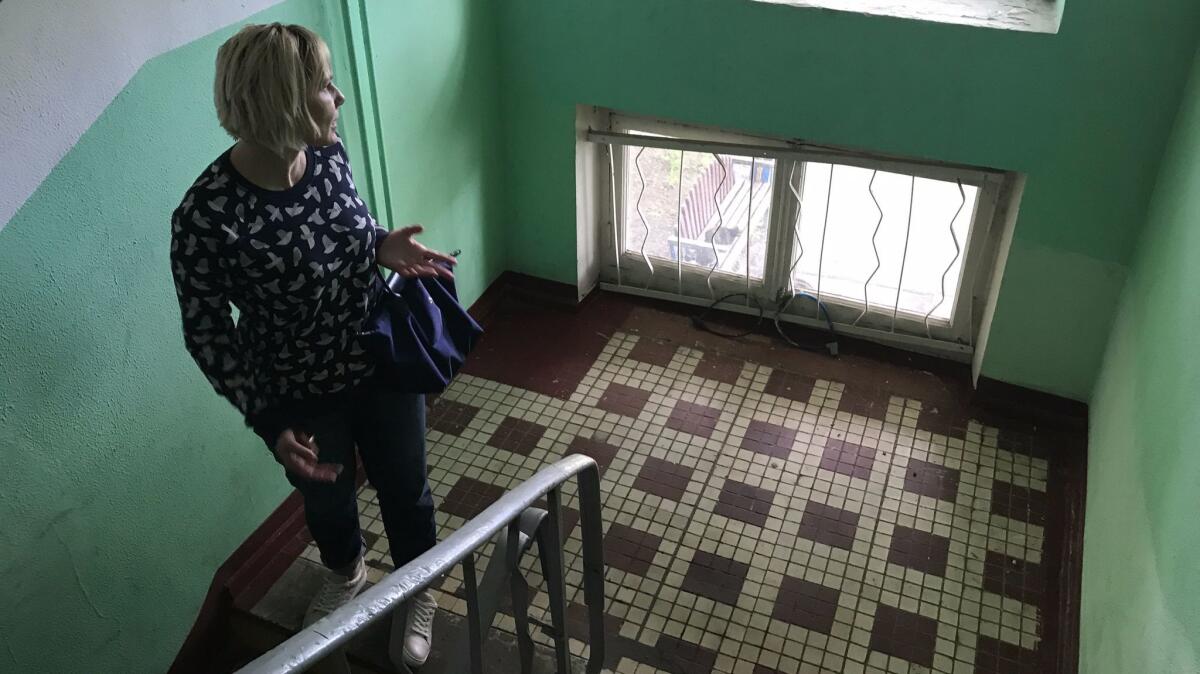In Moscow, protesters fight to save a Soviet relic and their homes
Reporting from Moscow — The crowded but cozy, two-room apartment where Aleksander and Alyona Rumyantsev live in northwest Moscow once belonged to Alyona’s great-grandparents, who received the apartment from the Soviet government.
The small rooms and running water were a drastic improvement from the barracks they had moved from in 1963, where they shared a kitchen and stood in line for the outhouse.
The five-story, brick apartment block was constructed in the early 1960s for workers from a nearby factory as part of a national program started in 1955 under Soviet leader Nikita Khrushchev. Hundreds of thousands of the prefab, box-like structures were erected across the former Soviet Union to house nearly 54 million people.
“These houses are the blood and sweat of our grandparents,” Aleksander Rumyantsev said. “They built a life here for us, and we don’t want to lose it.”
The long, simple block structures became known as Khrushchevki, and they remain an enduring remnant of the former communist state.

But now the Rumyantsevs and their neighbors now see their tranquil region under threat, thanks to a government program that aims to tear down more than 4,000 apartment houses in the Russian capital and relocate the residents into newly built apartment blocks. If the government plan goes through, it will be one of the biggest demolition programs in history.
Forty-three Khrushchevki buildings in the Rumyantsevs’ region are on the list for demolition, meaning an entire neighborhood would be nearly flattened for new construction.
The Moscow city government says the sweeping urban development plan, which has been backed by Russian President Vladimir Putin, will replace aging housing and improve the lives of the residents.
But Alyona Rumyantsev said she doesn’t believe a word of the government’s promises. Moscow Mayor Sergei Sobyanin devised the tear-down plan not to help the thousands living in dilapidated houses — though some of the targeted buildings are in dire shape — but to line the government elite’s pockets with profits from lucrative development contracts, she said.
“Putin or Sobyanin — it doesn’t matter who — want to ‘change the face of Moscow.’ But it’s all just for corruption,” the 43-year-old mother of two said.
“In Europe, they have houses that are older than ours, even 100 years old, and they simply repair them,” she said. “Why can’t they do that to ours, which is only 54 years old and doesn’t have any serious problems?”

Since the plan was announced three months ago, Muscovites like the Rumyantsevs have mobilized on social media and neighborhood groups to organize demonstrations, gather signatures for petitions and swap ideas on how to fight the plan.
More than 20,000 people showed up for the first protest on May 14, a huge turnout that shocked the governing elite eager to show progress and prosperity as Russia enters the 2018 election year. A second round of protests was held May 27 and 28 with a smaller but still sizable turnout of several thousand in central Moscow.
There are signs that the government might be listening.
When the plan was first announced, there were close to 7,900 houses listed for demolition, affecting nearly 10% of Moscow’s housing stock and 1.6 million people. The government has since edited the list of houses down to 4,000.
Meanwhile, many activists remains skeptical of government concessions, viewing them as nothing more than a public relations ploy from the mayor’s office before next year’s elections.
“Before the election, they want to talk to us and promise everything is going to be OK,” said Lydia Malysheva, a retired artist who has lived in her two-room apartment for 43 years.
As soon as the election is over in 2018, the government won’t care about angry voters at risk of losing their homes and for many, their life savings, she said.
“We’ve seen this thing before, we know how it works,” Malysheva added.
Under the proposed plan, owners of apartments in buildings listed for demolition would be offered compensation for their property either in equal value or in equal square feet for a new apartment in the same region.
Opponents of the measure say the project’s problems are multifaceted. Many wonder if the government will keep its promise to rehouse them in the same district. Others fear their buildings will be replaced by massive high-rise apartment complexes of poor-quality construction, such as the ones that cropped up on the outskirts of Moscow during a housing boom shortly after the breakup of the Soviet Union.
Demonstrators say at the heart of the matter is a government plan that would take away their property without their permission.
“They want to take away our perfectly good homes so that they can rebuild expensive, elite housing complexes on top of them,” said Olga Roslova, whose two-room apartment is about half a mile north of the Rumyantsevs’ building.
From her window, Roslova can see a view of the Moscow Canal, which feeds into the Moscow River. Expensive high-rise apartment buildings have sprung up along the river near her house in recent years, and Roslova said she fears her building will be sacrificed for a riverside development project.
In the last several weeks, Roslova has gotten to know the Rumyantsevs and other families through Facebook groups. In May, she began going door to door in her building, collecting signatures to see who favored or opposed the demolition and relocation program.
The city government has set up an online survey, and Mayor Sobyanin announced that 88% of the survey’s participants voiced support for the project.

Meanwhile, the Kremlin’s Council of Civil Society and Human Rights recommended that the Duma, Russia’s parliament, postpone or cancel the proposal to add amendments that address concerns of the protesters. The Duma continued to push the law through this month and scheduled a third and final reading for Wednesday, despite continued protests outside the parliament as deputies debated the bill.
For many opponents, faith that their activism might lead to results was fading.
“A lot of people are passive and just don’t realize what could happen. They just think they’ll get a bigger apartment and aren’t paying attention,” Roslova said. “But I shouldn’t have to give up my home, my investment, just because one of my neighbors wants a bigger bathroom in a new apartment.”
Ayres is a special correspondent.
Twitter: @sabraayres
ALSO
Russian authorities arrest opposition leader Alexei Navalny, but protests go forward without him
Here’s why Vladimir Putin should fear Russia’s millennials: They bypass state-controlled media
More to Read
Sign up for Essential California
The most important California stories and recommendations in your inbox every morning.
You may occasionally receive promotional content from the Los Angeles Times.











